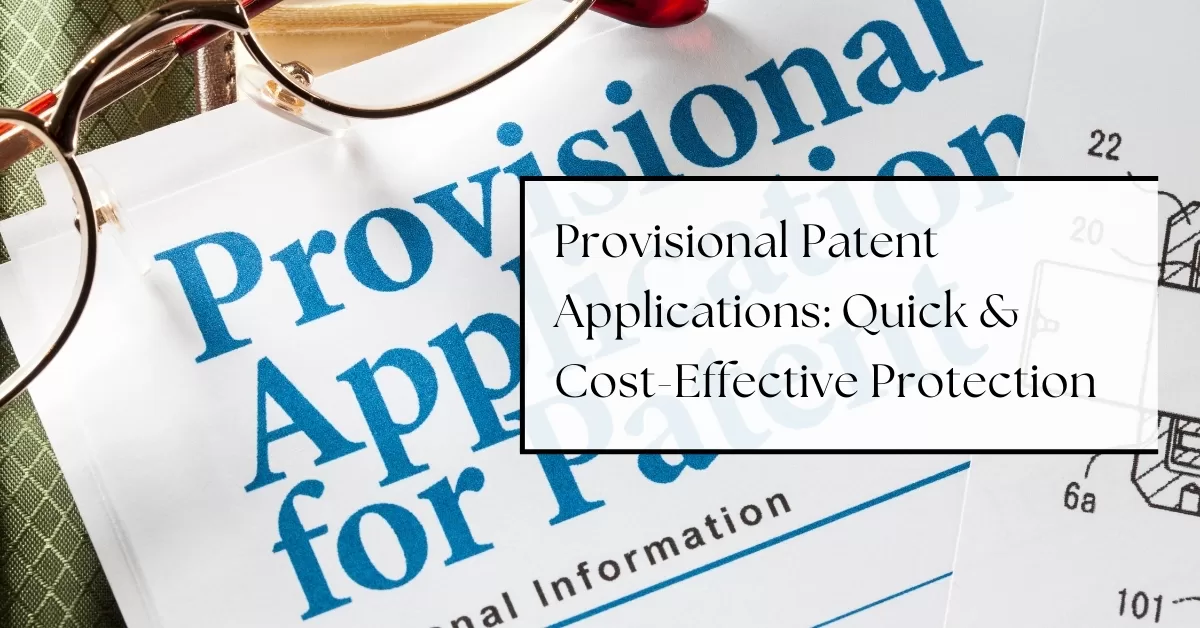Provisional Patent Applications: Quick & Cost-Effective Protection
Very often, I’m contacted by someone that has an invention but doesn’t know what to do next. First, as I explained in a Video called Patent Searching, I recommend doing a Patent Search.
The next step is to protect the invention while the marketing effort proceeds. In some cases, a prototype has to be made, or a website built or a licensing effort is started. If the invention is still in the developmental stage, a Provisional Patent Application can provide the quickest, most economical way to protect the invention.
A Provisional Patent Application usually includes a description of the invention and supportive drawings. However, it doesn’t require a specific format and requires a minimum amount of paperwork to be filed. In fact, a provisional patent application is never examined by the U.S. Patent Office but is only reviewed for formal matters such as including payment.
Being that a provisional patent application is not examined. it is relatively inexpensive to prepare and file.
There are a number of advantages to a provisional patent application. First, it provides a one-year period to further develop the invention, determine marketability, seek licensing agreements and protect the ability to obtain international patent protection.
Second, once a provisional patent application is filed, the invention can be marked patent pending.
Third, it can be prepared relatively quickly and inexpensively. Fourth, if the invention is still being developed, it gives 12 months before a non-provisional patent application has to be filed. In our office, the process of filing a provisional patent application boils down to a fairly simple procedure.
We first have an exploratory discussion with the inventor and gain a foundational understanding of their invention. After this initial consultation, the inventor provides us with a series of documents including the drawings, pictures, and description of his/her idea. After analyzing these drawings in conjunction with the description, we prepare a provisional patent application, which is patentable over the prior art of which we are aware. Once the inventor has reviewed the draft application and is satisfied that the invention is covered, we file the Provisional Patent Application with the Patent Office. The best advice is to have a patent professional handle preparing and filing your Provisional Patent Application.
Contact your Patent Attorney to learn more.


